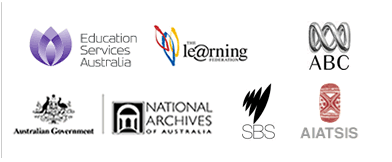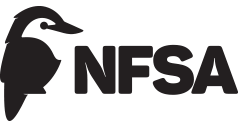This clip chosen to be PG
Clip description
Black-and-white historical interview footage gets the response of white folk to Aboriginal people. The footage, shot on city streets, and in homes of white folk, reveals how they view Aboriginal people.
Curator’s notes
The 1965 interview footage of white folks’ response to Aboriginal people is insightful and, more often than not, based on the speakers having never met an Aboriginal person. The issue of Aboriginal representation has become an incredibly important one due to the fact that the beliefs that many whites hold of Aboriginal peoples are based on second or third-hand information, often through the media. The opening sequence of this vox pop sets the tone of the film.
Teacher’s notes
provided by 

This clip shows interviews conducted in 1965 with non-Indigenous Australians on the subject of their views on Indigenous Australians. The interviews are filmed in people’s homes, in the street and at a social function. Footage of Dr Kumantjayi (Charles) Perkins speaking publicly on the issue of Anglo-Australians’ responsibility to Indigenous Australians follows. Finally there is newsreel footage of the protests that took place on the Freedom Ride of 1965. Two intertitles are used to provide information and context. The clip is mostly black-and-white footage.
Educational value points
- The clip features Dr Charles Perkins, a pioneer in Indigenous political leadership and activism. Perkins (1936–2000) moved to Sydney in 1963 to study at the University of Sydney. As the leader of Student Action for Aborigines he was an articulate spokesman for and played an integral role in the Freedom Ride of 1965. He went on to provide inspiration and leadership in key roles as a national Aboriginal leader and spokesperson until his death in 2000.
- The non-Indigenous Australians interviewed in this clip reveal in their comments their separation from and ignorance about Indigenous people and cultures, exposing the political and racial context of Australia in the 1960s. At the time Australia was regarded as a homogeneous society, with policies of immigration and assimilation largely designed to maintain this status quo. Indigenous Australians were not included on a national census, nor were they guaranteed the right to vote until 1967.
- The clip clearly contrasts the non-Indigenous Australians who, Perkins says, talk about providing opportunities for Aboriginal people ‘but don’t do it’ and the University of Sydney students who in 1964 decided it was time to act. From a young Charles Perkins stating that while most Anglo-Australians claim to ‘want to give the Aborigine a fair go’ they do nothing to ensure it, the clip cuts to footage of students carrying a banner that reads ‘Student Action For Aborigines’. The Freedom Ride of 1965, in which Perkins played a major role, was designed to confront non-Indigenous Australian society with the racial injustice that it was ignoring not just in rural New South Wales but throughout Australia.
- The Student Action for Aborigines movement had its inception at the University of Sydney as a result of criticism of Australian students by the US press in 1964 for attending a rally in support of the newly enacted US Civil Rights Bill while apparently ignoring racism at home. The student association organised a concert and rally in July 1964 in support of Indigenous Australian rights, addressed by the only two Indigenous students at Sydney University at the time, Perkins and Gary Williams.
- Indigenous Australian filmmaker Rachel Perkins (1970–) portrays her father’s story in Freedom Ride, the first episode in the SBS series Blood Brothers (1993). Her later works explore and communicate a range of experiences of Indigenous Australian people. She has directed the feature films Radiance (1998) and One Night the Moon (2001). She was a key creator on the SBS series First Australians (2008) and edited the accompanying book First Australians: an illustrated history (2008).
Thanks to the generosity of the rights holders, we are able to offer 'Have you ever met an Aboriginal [person]?' from the documentary Blood Brothers – Freedom Ride as a high quality video download.
To play the downloadable video, you need QuickTime 7.0, VLC, or similar.
You must read and agree to the following terms and conditions before downloading the clip:
australianscreen is produced by the National Film and Sound Archive. By using the website you agree to comply with the terms and conditions described elsewhere on this site. The NFSA may amend the 'Conditions of Use’ from time to time without notice.
All materials on the site, including but not limited to text, video clips, audio clips, designs, logos, illustrations and still images, are protected by the Copyright Laws of Australia and international conventions.
When you access australianscreen you agree that:
- You may retrieve materials for information only.
- You may download materials for your personal use or for non-commercial educational purposes, but you must not publish them elsewhere or redistribute clips in any way.
- You may embed the clip for non-commercial educational purposes including for use on a school intranet site or a school resource catalogue.
- The National Film and Sound Archive’s permission must be sought to amend any information in the materials, unless otherwise stated in notices throughout the Site.
All other rights reserved.
ANY UNAUTHORISED USE OF MATERIAL ON THIS SITE MAY RESULT IN CIVIL AND CRIMINAL LIABILITY.
This clip is available in the following configurations:
| File name | Size | Quality | Suitability |
|
freedomr1_pr.mp4
|
Large: 19.3MB |
High |
Optimised for full-screen display on a fast computer. |
|
freedomr1_bb.mp4
|
Medium: 9.1MB |
Medium |
Can be displayed full screen. Also suitable for video iPods. |
Right-click on the links above to download video files to your computer.
Thanks to the generosity of the rights holders, we are able to offer this clip in an embeddable format for personal or non-commercial educational use in full form on your own website or your own blog.
You must read and agree to the following terms and conditions before embedding the clip:
australianscreen is produced by the National Film and Sound Archive. By using the website you agree to comply with the terms and conditions described elsewhere on this site. The NFSA may amend the 'Conditions of Use’ from time to time without notice.
All materials on the site, including but not limited to text, video clips, audio clips, designs, logos, illustrations and still images, are protected by the Copyright Laws of Australia and international conventions.
When you access australianscreen you agree that:
- You may retrieve materials for information only.
- You may download materials for your personal use or for non-commercial educational purposes, but you must not publish them elsewhere or redistribute clips in any way.
- You may embed the clip for non-commercial educational purposes including for use on a school intranet site or a school resource catalogue.
- The National Film and Sound Archive’s permission must be sought to amend any information in the materials, unless otherwise stated in notices throughout the Site.
All other rights reserved.
ANY UNAUTHORISED USE OF MATERIAL ON THIS SITE MAY RESULT IN CIVIL AND CRIMINAL LIABILITY.
Copy and paste the following code into your own web page to embed this clip:




 Share
Share





